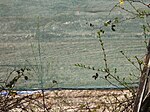Tottington Wood
Forests and woodlands of West SussexLocal Nature Reserves in West Sussex

Tottington Wood is a 5.1-hectare (13-acre) Local Nature Reserve in Small Dole in West Sussex. It is owned by Hopegar Properties and managed by The Tottington Woodlanders.This semi-ancient wood is recorded back to 1600 and it has an oak tree which is over 250 years old. Mammals include roe deer and bats and there are birds such as woodpeckers and blue tits.There is access by a footpath from Henfield Road.
Excerpt from the Wikipedia article Tottington Wood (License: CC BY-SA 3.0, Authors, Images).Tottington Wood
Sands Lane,
Geographical coordinates (GPS) Address Nearby Places Show on map
Geographical coordinates (GPS)
| Latitude | Longitude |
|---|---|
| N 50.9 ° | E -0.272 ° |
Address
Sands Lane 43
BN5 9XR
England, United Kingdom
Open on Google Maps










